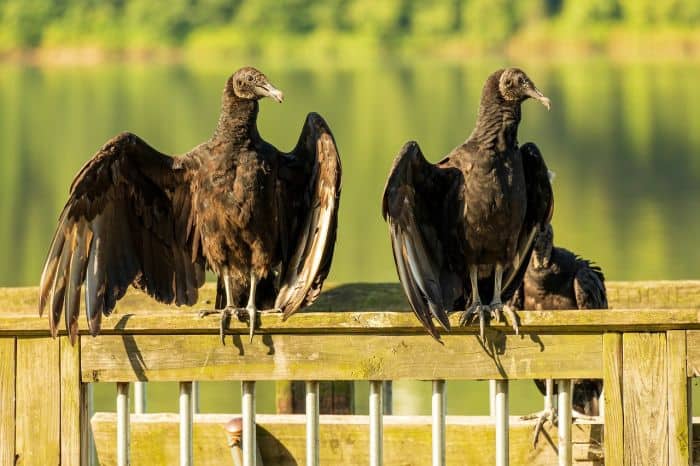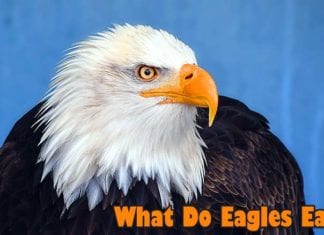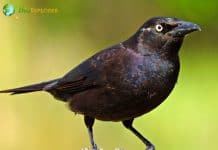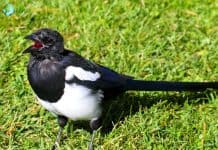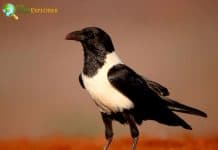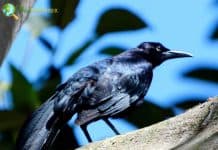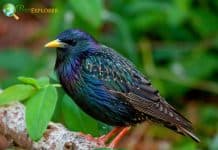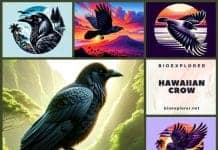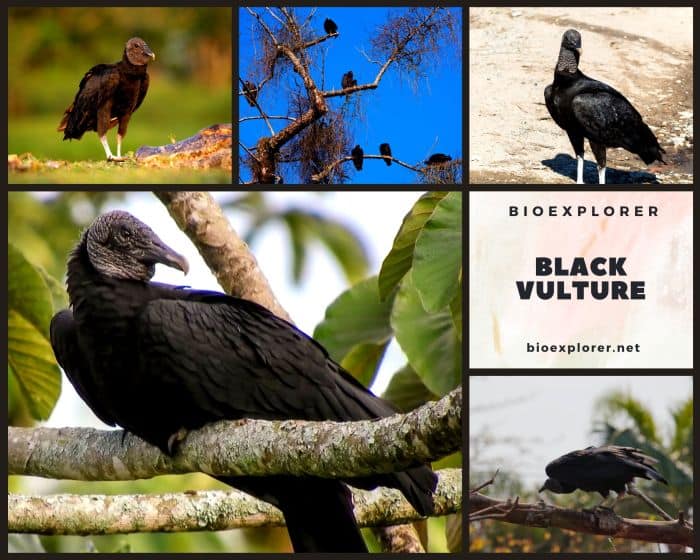
| Animalia | Aves | Accipitriformes | Cathartidae | Chordata | Coragyps atratus |
The Black Vulture, scientifically known as Coragyps atratus, is an intriguing bird renowned for its resilience and adaptability. Belonging to the New World vulture family, this blackbird is commonly observed soaring through the skies across the Americas.
One cannot overlook the Black Vulture’s striking appearance. Its glossy black plumage distinguishes it, while its imposing figure boasts an impressive wingspan reaching up to 5 feet. The bird’s featherless head, colored dark gray and nearly black from a distance, contrasts sharply with its piercing white eyes.
Despite their bad image and reputation as scavengers, Black Vultures play a crucial role in our ecosystem. They serve as nature’s cleanup crew, predominantly feeding on carrion and leftover kills. By consuming decaying organic matter, they help control the spread of diseases and maintain the environment’s delicate balance.
Black Vultures’ strong social structure is another remarkable aspect. These birds often reside in large colonies and can be observed soaring together in sizable groups. Their ability to thrive in such communities highlights the intricate interconnectedness of all life forms. It serves as a testament to the beauty of nature’s harmony.
Black Vulture Physical Characteristics
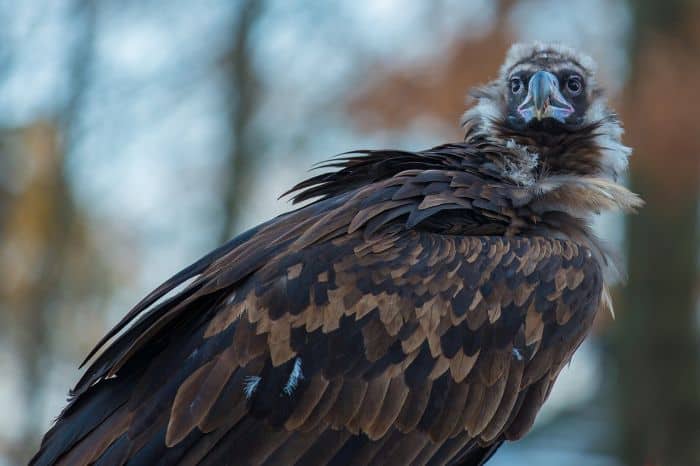
The black vulture is a large, dark bird with a 4.5 to 5 feet wingspan. The huge, dark body of the black vulture features a naked black head. When viewed from below, the tail is short, and the wings are largely black, with a white patch towards the end of each wing. Its slightly smaller size, white wing patches, and very noticeable bare head – as opposed to the turkey vulture’s red head – distinguish it from the latter in appearance[1].
Black Vultures create a cooling effect during scorching hot days
Black Vultures Environment’s Greatest Friend
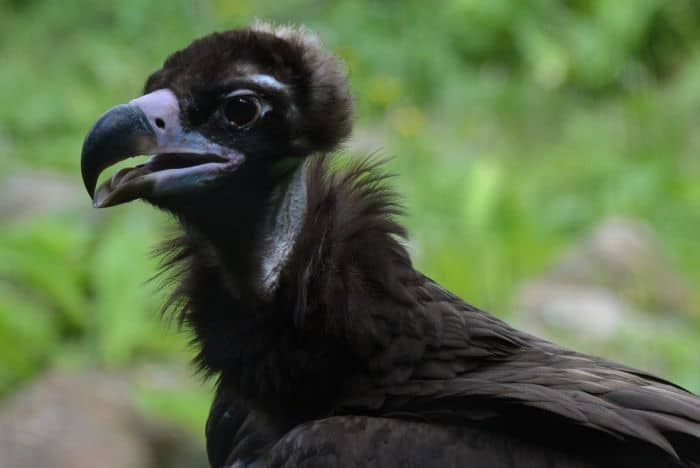
By devouring dead animals before they rot and spread disease, vultures contribute to environmental cleanup. Because of their disgusting feeding habits, vultures have long been considered dreadful animals. However, we now understand the significant function that these scavenger birds play in “cleaning up” dead animals from our fields and forests.
Black vultures puke to mitigate their body weight and ward off predators
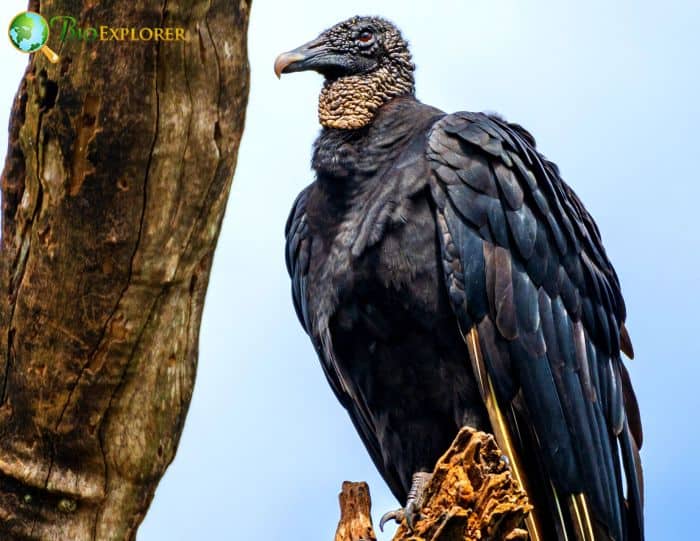
Vultures vomit to reduce their body weight and improve their ability to take flight. Vomiting is a defense mechanism used by birds to ward off potential predators.
Black vultures are potent detectives
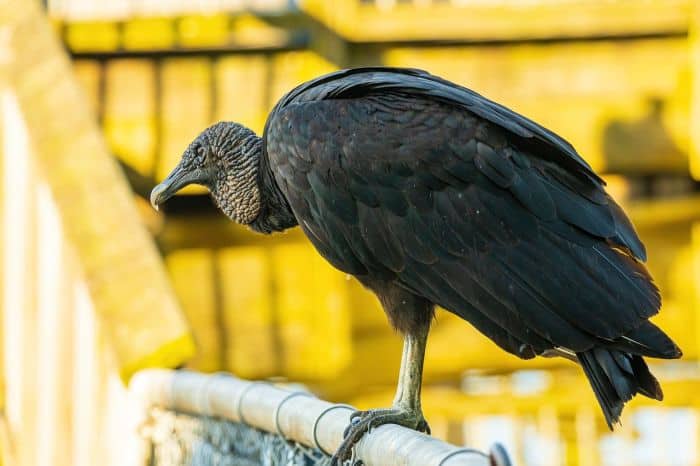
Researchers are looking into using vultures to help find bodies from crimes as they have special senses and abilities.
Black vultures are faithful to their life partner
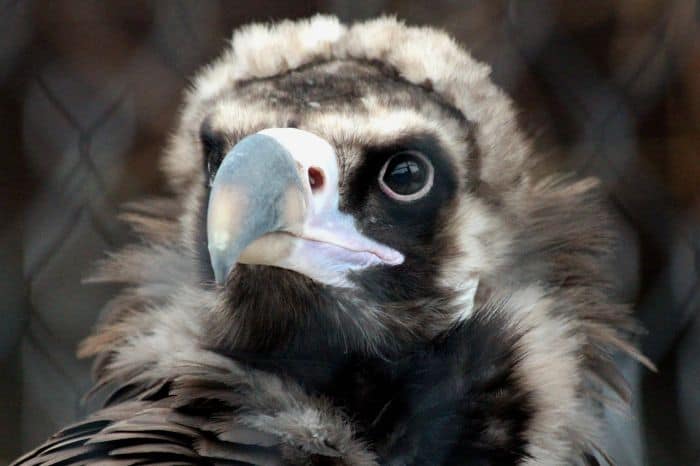
Black vultures are monogamous and remain with their partners year-round for many years. They continue to feed their young for up to eight months after fledging and have close social ties to their families for the rest of their lives.
What Do Black Vultures Eat?
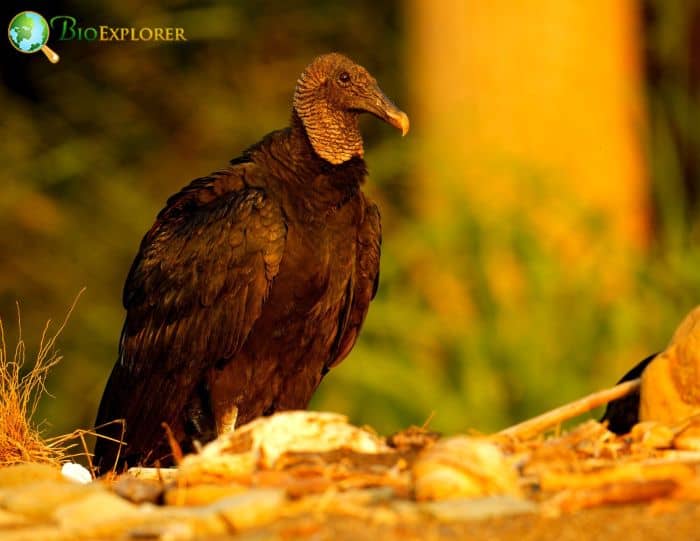
The Black Vulture consumes several organic matters including but not limited to[¶]:
- Gopher Tortoise (Gopherus polyphemus).
- Opossum D’amérique (Didelphis virginiana).
- Ardilla Zorra (Sciurus niger).
- Cerf De Virginie (Odocoileus virginianus).
- Eastern Gray Squirrel (Sciurus carolinensis).
- Capybara (Hydrochoerus hydrochaeris)
- Tree squirrels (Sciurus)
- Common Raccoon (Procyon lotor).
- Armadillo Nueve Bandas (Dasypus novemcinctus).
- Pig (Sus scrofa)
- Domestic Cat (Felis catus).
- Aligator Americano (Alligator mississippiensis).
- Poisson Épineux (Actinopterygii)
- Leatherback (Dermochelys coriacea)
- Olive Ridley (Lepidochelys olivacea).
- Central American Agouti (Dasyprocta punctata).
- Mamífero (Mammalia)
- Domestic Pig (Sus scrofa domesticus).
- Jacare (Caiman yacare)
- Longnose Stingray (Hypanus guttatus).
- Loggerhead (Caretta caretta)
- Aligator Americano (Alligator)
- Vertebrado (Vertebrata)
- Terrapins (Testudines)
- Grande Aigrette (Ardea alba).
- Aurochs (Bos taurus)
- African Oil Palm (Elaeis guineensis).
- Coyote (Canis latrans)
- African Wild Ass (Equus africanus).
- Mouffette Rayée (Mephitis mephitis).
- Peccaries (Tayassuidae)
- Domestic Sheep (Ovis aries).
- Dindon Sauvage (Meleagris gallopavo).
- Coq Bankiva (Gallus gallus).
- Groundhog (Marmota monax)
What Eats Black Vultures?
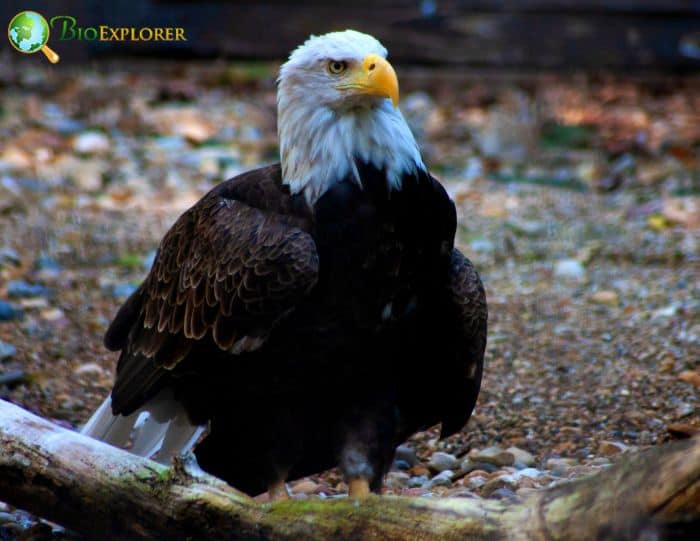
Águila Cabeza Blancas (Haliaeetus leucocephalus) predate Black Vultures[§].


